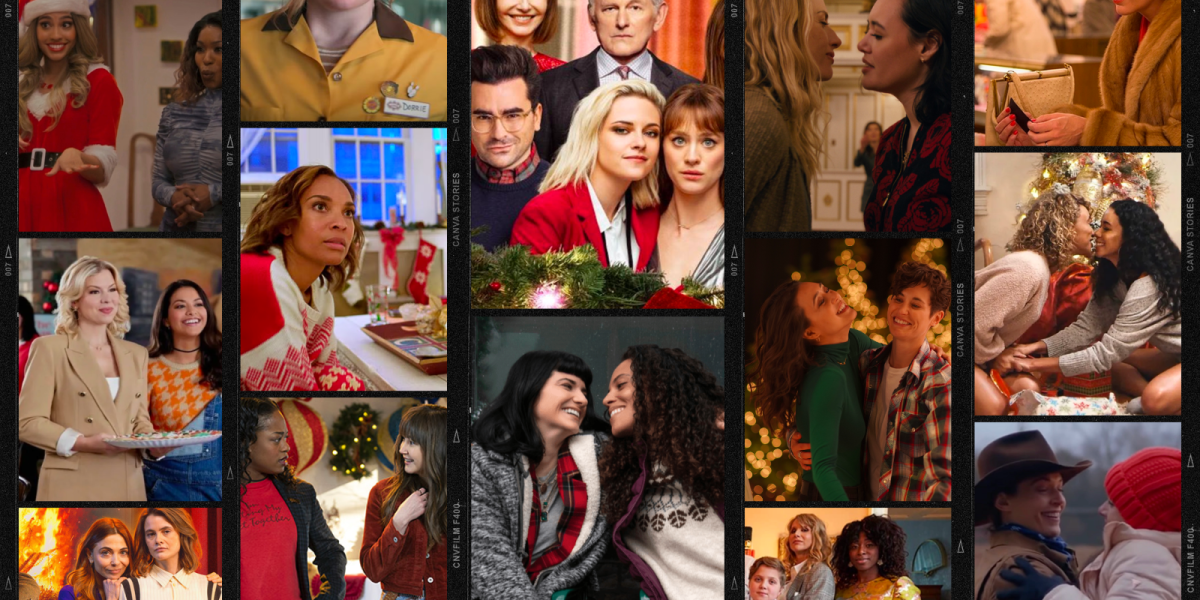Hey there starship troopers! It’s the holiday season and we’re here to help you get your shit together in a variety of ways: recipes, kits, gift guides, holiday how-tos and so very much more. Come along with us, won’t you, to Autostraddle Holigays 2011! FYI, if you follow the amazon links from our website when making holiday purchases, Autostraddle gets a little percentage of that money via our Amazon affiliates account, so we encourage you to do that All Season Long!! Thank you!

You’ll probably need to get some gifts for the special snowflake people in your life, but first let’s start with YOU. Do you own a DSLR camera? Have you been thinking about buying one? There’s really no better time or excuse than the holidays to buy yourself an extravagant digital camera that’ll take your festive happy snaps to a whole new level.
We asked a bunch of photographers, ranging from the professionals to the weekend warriors, to tell you all about their favourite cameras and lenses, so you can make a super informed decision about your next purchase. Or, if you already have a DSLR and just wanna talk depth of field, this will be relevant to your interests as well.
Update: This article is based on the personal recommendations of photographers on the Autostraddle team. Coincidentally, they are all Canon users and so many of their recommendations are for Canon products. If you use another brand of camera and can make a recommendation, we’d love to hear it! Leave it in the comments section below.
![]()
Robin Roemer
Autostraddle Photographer
Canon 5D Mark II
If you are serious about making photography a full or part-time career, or at the very least making back the $2500 you will spend on a camera body alone, I recommend the Canon 5D Mark II. It looks just like the Canon 5D with some major improvements. First of all, this camera is amazing in low light. You can shoot up to 6400 ISO without much grain at all. It, like the Canon 7D, can also take HD video. But seriously, don’t buy this camera if you don’t know everything about shooting in manual because it’s a waste in the hands of an amateur and way way too expensive.
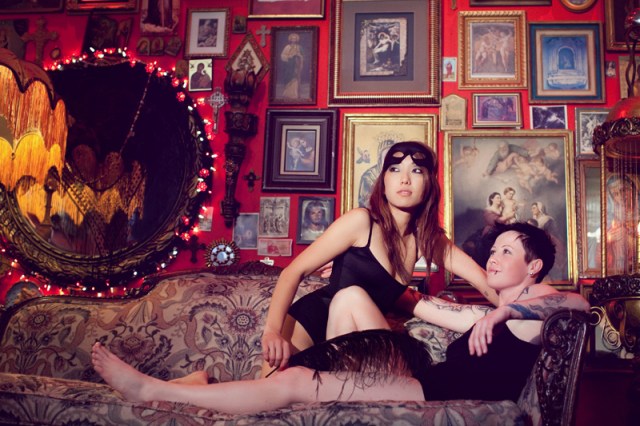
Canon Flash 580EXII
Like a professional camera, having a professional flash is only worthwhile if you know how to use it. Bouncing flash is an art. Direct flash can flatten a photograph in a really gross way if not done correctly. (If done correctly, it can be really awesome.) I use this flash on manual and it is amazingly powerful. You can take these bad boys off camera and use them with umbrellas and pocket wizards/sync cords and get a softbox effect without spending thousands on heavy duty light kits. Get some “eneloop” rechargable batteries and shoot away for hours. If you find you are shooting faster than your flash can keep up, consider Canon’s compact battery pack CP-E4. It houses 8 more batteries (use the same batteries as you are using in your flash). Strap that bad boy onto a belt and it hooks right up to your flash and allows you to pop off many flashes in a row without needing time to recycle.
I’m really into prime/fixed lenses. The downside of primes is that you have to change your position since they do not zoom. The upside is that they are sharp, have tremendous depth of field, and can pull amazing color/tonal detail. My favorite two lenses are:
Canon Normal EF 50MM f/1.2 L
This is by far my favorite lens. If I was going to be stranded on a deserted island and I had to bring three things, I would bring the Canon 5DMark II, the 50MM 1.2, and probably a boat because I’m not sure I like the idea of a deserted island post-Lost. There is only the slightest distortion on the 50MM for portrait, but you can use this to your advantage.
Canon 85MM f/1.2L II
This is an amazing portrait lens. No distortion, just solid amazing color and detail. You do have to have some room to use it though so don’t rent this lens and a closet-sized studio. It’s super thick glass causes it to be a little heavy, but at $2000 a pop, you want to feel the weight of decent glass in your hand. It’s so sexy, you guys.
Other lenses to consider:
Canon EF 24-70MM f/2.8
I know everyone loves this lens because it’s versatile but be careful about using it for years and years without getting it checked out once and awhile. It’s already not the sharpest lens you can own and it tends to get fuzzier with age. It is widely known as the most popular standard Canon lens because it’s decently priced and has a great range.
Canon EF 16-35mm f/2.8 II
This is by far the best canon wide zoom. This is great for nice landscape shots, big shots of a room, or fun close ups, but obviously there is distortion as it is a wide angle. I’m not a fan of the “fish eye” look, so this is as wide as it gets for me.
Canon 70-200mm f/2.8L
If you want to shoot amazing portraits and not have your subject know you are targeting them, this is a great stealthy lens. Plus, its HUGE and you’ll get at least one, “damn, that’s a serious camera/lens comments per minute.” Intimidation is the key to success.
If you are a pro, try to stay away from lenses that are f4 and up.
Check out Robin’s photography.
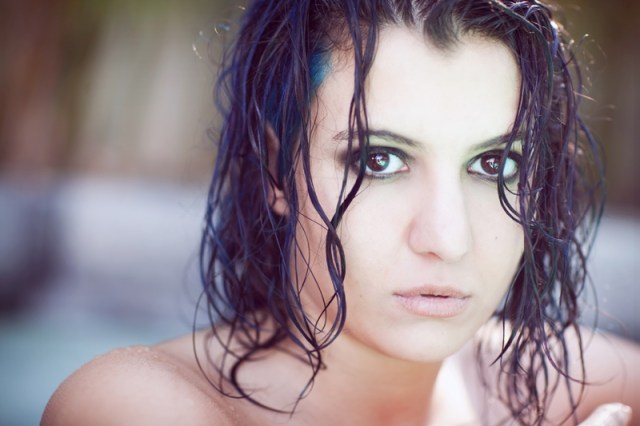
![]()
Stef Mitchell
Contributing Photographer
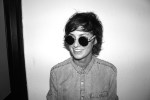
I use a Canon EOS 5D Mark II camera. It’s one of the best cameras on the market and so I had pined for it like Oliver for a long time. When it arrived in its sealed brown box, I cleared a space on my bed and, taking a large knife from the kitchen, I opened the box with the precision of a bomb squad and proceeded to marvel at its contents. Being a little too excited, I dropped the knife and sliced my thumb open from the nail down to my knuckle. I have an aversion to blood so I spent the next half an hour lying next to my new camera with my thumb wrapped in toilet paper trying not to pass out. I thought I’d take my chances blowing off stitches to play with the 5D.

As the camera body was no small purchase, I could only afford to get one lens. I saved up for a long time for the Canon L Series 24–105mm zoom lens, reasoning that it would be the most useful lens for me because I can basically get away with using it for all occasions.
The lens is full frame and has a slight kick on the edges, making it seem like it can see further sideways than your own eyes can. The only bummer is that the f-stop only goes to 4.0. I recently used a friend’s Canon 85mm fixed lens and almost gave myself a nose bleed seeing the difference in switching the f-stop to 1.8. That will be first on my list of things to buy once I win the lottery. Aside from that addition, I couldn’t recommend the Canon 5D and 24-105mm lens set up more.
The first time I used this camera, the difference between my old one (Canon EOS 450D) and the one I had in my hands was like comparing a Mercedes to a go-cart. I ran outside to shoot anything around me and realized I was shielding it from the wind like a newborn.
Generally I would recommend any Canon product. I’ve progressed from the Canon IXUS point and shoot to the Canon 5D, and used almost everything in between. The shots have always been super sharp and it allows you to have the colors really accurate or saturated. Despite only playing around with a Nikon on a few occasions, I have a child-like hate for them, it’s sort of like the same way you’re born liking a sports team and hating all their rivals. So while my opinion of Canon being the superior brand of cameras and lenses isn’t exactly objective, I stand by it.
Check out Stef’s photography. For inquiries email stefmitchell1 (at) gmail (dot) com

![]()
Kate
Guest Contributor

I don’t remember how old I was when I saw a picture of myself and thought, “I should really be on the other side of the camera”, but that burgeoning insecurity propelled me into the dazzling world of mediocre photography that I inhabit today.
Since my dad gave me his old Pentax SLR as a kid, I have been through a lot of cameras. The Canon EOS 7D is easily my favourite. From the moment I picked it up, I noticed the excellent build quality. It is seriously sturdy, considering the reasonable weight, and the grip feels almost as though it had been molded to fit my hand. This is so important when you are shooting for any amount of time.
Usability on the 7D is seamless. My thumbs just automatically find the multi-function and quick menu buttons located around the shutter button and viewfinder now. The shooting modes range from full auto (point and shoot) to creative auto, which allows for tinkering without necessarily knowing all about aperture and shutter speed. I tend to lean towards AV mode most often. It gives priority to the aperture and allows me to control depth of field. The 7D also allows for personal customisations and, of course, manual mode.
The lens I bought with my 7D body was the Canon 24-105 EF f/4L IS USM lens. This is a robust and versatile zoom lens with fast, accurate focus. The lens can capture a sweeping landscape and a bee hovering over a flower in crystal focus. Whenever people ask me which lens to start out with, I recommend this one.

My secondary lens is a Canon 50mm EF f/1.4 USM and I am so in love with the depth of field on this lens, that I can’t even find words. One word I would like to shout at you, however, is BOKEH! Look up the bokeh galleries on flickr, and you will see what I mean. Aside from that, it is a great lens to have when I am walking around with my camera all day and don’t feel like dislocating my shoulder.

![]()
Taylor
Senior Tech Writer
I love taking pictures and I love things with on buttons, but I’m actually pretty new to DSLRs. I shot 35mm when I had access to a darkroom, and then begrudgingly came around and realized that I wanted more pictures and had less time. The thing about digital cameras with more advanced settings (DSLRs…not point and shoot cams) is that no matter how you slice it, it’s expensive. You’ll need a body (the hunk of camera you hold in your hand) and lenses, and shit adds up fast. The consensus is generally that you should assess your budget, get a body you can afford, and save some cash for some decent-to-awesome lenses. Lenses are expensive, but they’ll last you forever if you take care of them. And you can use your lenses on any body you might buy, assuming you keep it somewhat within the family (i.e. Nikon-compatible DSLR lenses or Canon-compatible DSLR lenses).
My first DSLR was a refurbished Canon XS body. As far as DSLRs go, the Canon XS about as entry-level as you can get — but that’s okay! Something along these lines would be more than adequate if you just want to play around. While the XS is a fine ultra-basic budget DSLR, at this point the Canon XSi, XT or the XTi would be a sizable step up, so there’s no reason not to spring for one of those to future-proof your shit a tiny bit. Though you could probably buy a Canon XS for next to nothing. In fact, I’d trade you mine for a case of decently hoppy beer.
When I bought my Canon DSLR, it came with an 18-55mm kit lens (a kit lens is usually a kinda meh quality package deal lens that comes with a body). While that lens is by no means awesome, it is a) cheap and b) fairly versatile, since you can keep it zoomed out at 18mm and be all wide-angly which is fun at big events, or when you want to make a Craigslist post for your tiny room and make it look huge and airy.
My one most important suggestion for anyone on a tight budget or just getting started with digital photography is this: Buy a super cheap (think $100) 50mm f/1.8 lens. It’ll teach you a lot, if you’re looking to start from the ground up. You’re gonna have to walk around to frame a shot since there’s no zooming to speak of, and that’s super important for any beginner to get a feel for. The 50mm f/1.8 is a) super cheap b) super lightweight and compact and c) good for low-light situations (sexy) and d) really sharp for how cheap it is.
Beyond that little fella (which I still use all the time) I’ve got a Canon EF 75-300mm f/4-5.6 telephoto zoom lens that is mostly pointless. So far I’ve taken about three pictures of birds with it, but it’s great if you want to watch your hot neighbor across the alley undress or something. A few weeks ago (during an Amazon bender and after two glasses of wine) I bought my first dedicated wide-angle lens, a Sigma 10-20mm f/4-5.6 HSM. I haven’t had a chance to test drive it much, but it looks like it’s going to be really fun for shooting out and about in the city, taking pictures at events and stuff, or shooting in the wilds on assorted camping adventures.
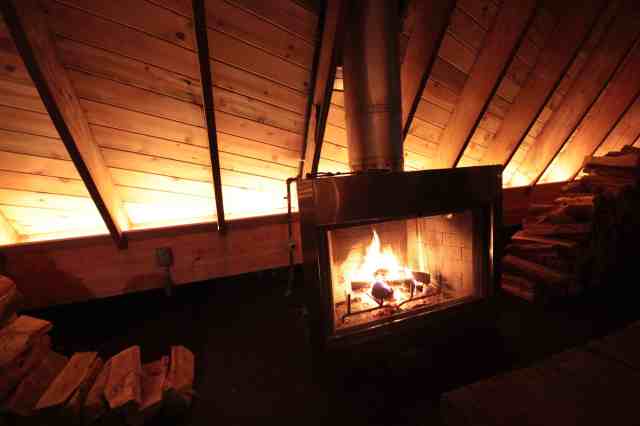
Like I said, I’ll trade you my old Canon XS for beer because I just bought the Canon 60D. I’m still shooting with my lens that cost me less than $100, but the image quality jump is impressive. And most importantly, it feels more like a real camera. I plan on getting a faster 50mm when I can afford to, and actually I might not even end up using any other lenses once I do.
With digital photography, I think the bottom line is to find something that feels good and make the most of it. As a tech-obsessed individual, I tend to get a bit wrapped up equipment, specs, etc…but most of my favorite photos have been the serendipitous by-products of whatever camera I had in my hand at the moment. Don’t overthink it. Just shoot, shoot, shoot and see what happens.
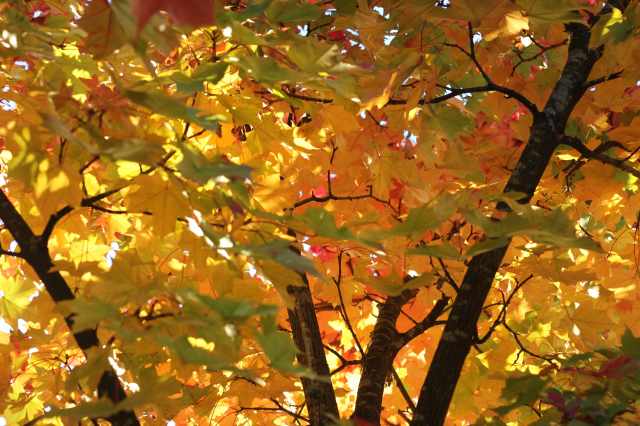
![]()
Crystal
Music Editor
Three months ago — prior to starting a new job that required me to take publication-quality photos — I didn’t even know what ‘DSLR’ stood for. The only camera I owned was a Canon point and shoot that I’d only ever dust off for holidays and weddings. I didn’t have the faintest idea about digital cameras or lenses or how to take a photo that was good enough to publish somewhere other than Facebook.
With that in mind, the Canon EOS 60D was the perfect camera for me. The controls are super user friendly, and the automatic setting takes high-quality photos with little effort on my part. But it’s still a fairly serious camera – it has plenty of creative modes and advanced settings so, as I gradually become a better photographer and figure out what things like ‘ISO’ and ‘f-stop’ mean and how they’ll affect my shots, I’m sure it’ll serve me well for the remainder of my accidental photography career.
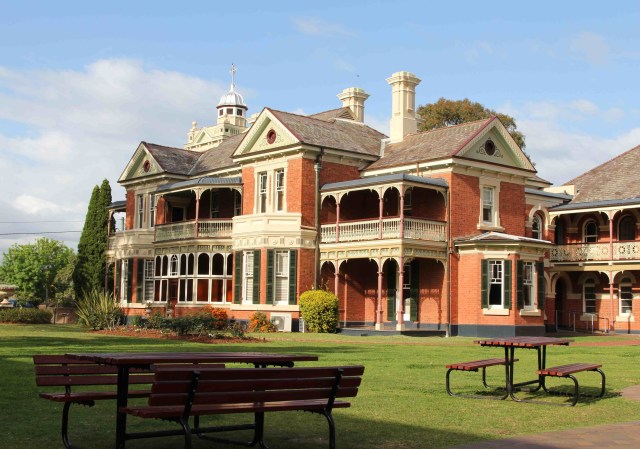
Every now and then Kate lends me her more fancy and expensive Canon EOS 7D and, as a total DSLR n00b I can’t really tell the difference between the two models – except my 60D is slightly lighter and has a flip screen. So if you don’t plan on doing anything more than a little amateur photography, the 60D will suit you just fine. Same goes for the entry level Canon EOS 600D, which I tried out and probably would’ve purchased had my employer not been footing the bill.
Rather than purchasing a 60D that came packaged with a single or double lens kit, I opted to buy the body and lens separately. Just like Stef and Kate, I opted for the Canon EF 24-105mm f/4L IS USM lens. I’ve found that the 24-105mm range is suitable for both close-up and landscape shots, so it removes the need for me to buy and then carry around two lenses. And like Robin, I also use a Canon EX580 II flash.
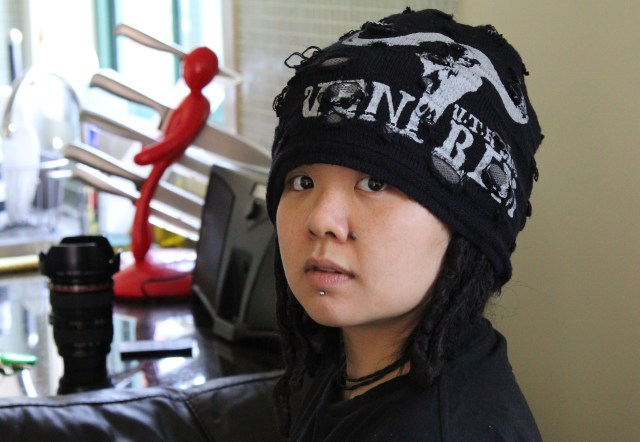
My job requires me to frequently travel interstate, which means lugging a 17″ MacBook Pro plus my camera, lens, flash, hard drive, chargers, batteries and power packs in and out of trains, taxis, hotels and airplanes. The Lowerpro Fastpack 350 camera and laptop backpack makes this a cakewalk, it has room for all the things.
![]()
Reader Recommendations
Nikon D40X
Nikon D5000 with 18-200mm VR lens
Nikon D3000 with Nikkor 35mm/f1.8 lens
Canon EOS 1100D AKA Rebel
Canon 500D AKA Rebel T1i
NON DSLR: Canon PowerShot S95
![]()
It’s your turn! Got a DSLR recommendation? Leave it in the comments section.






